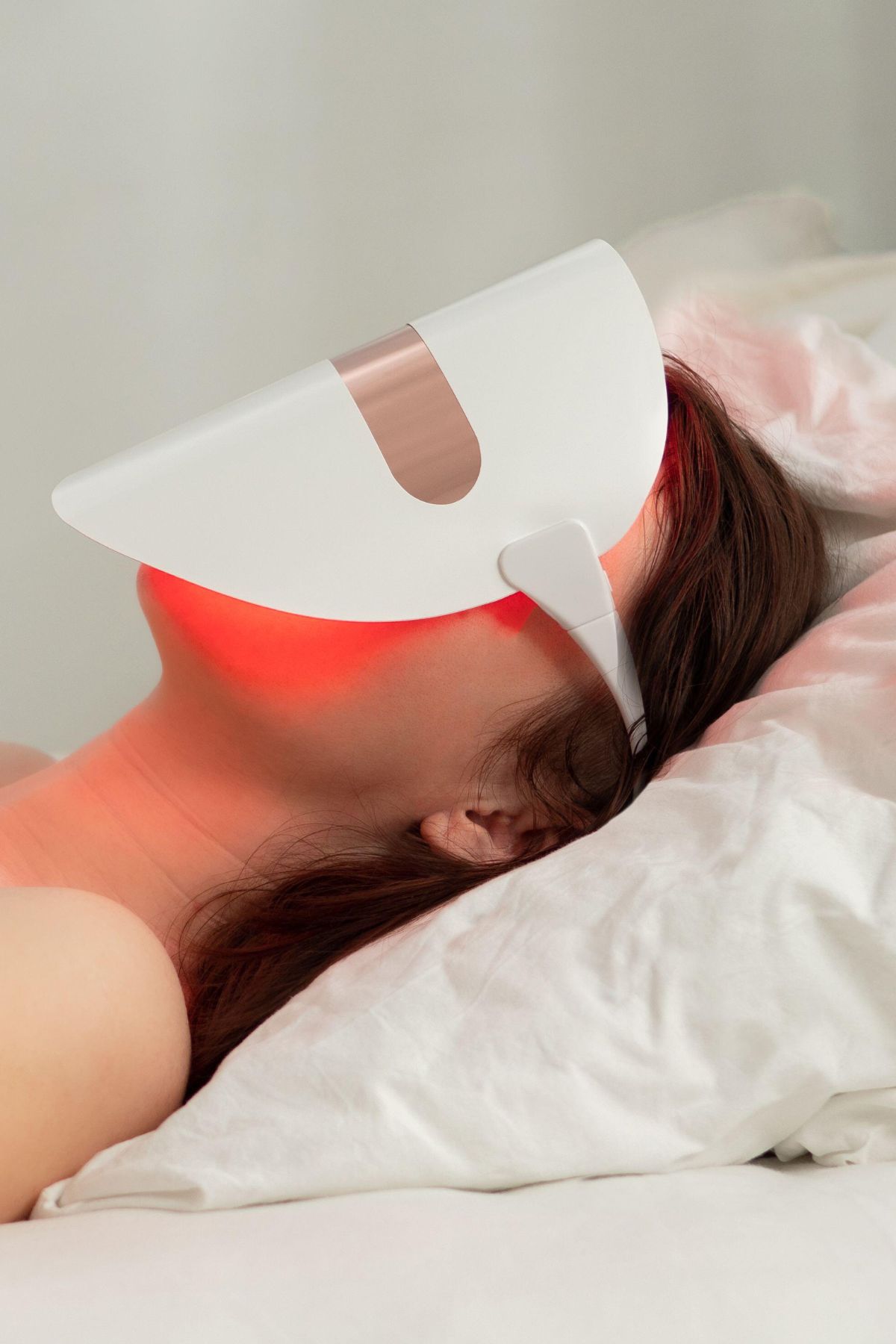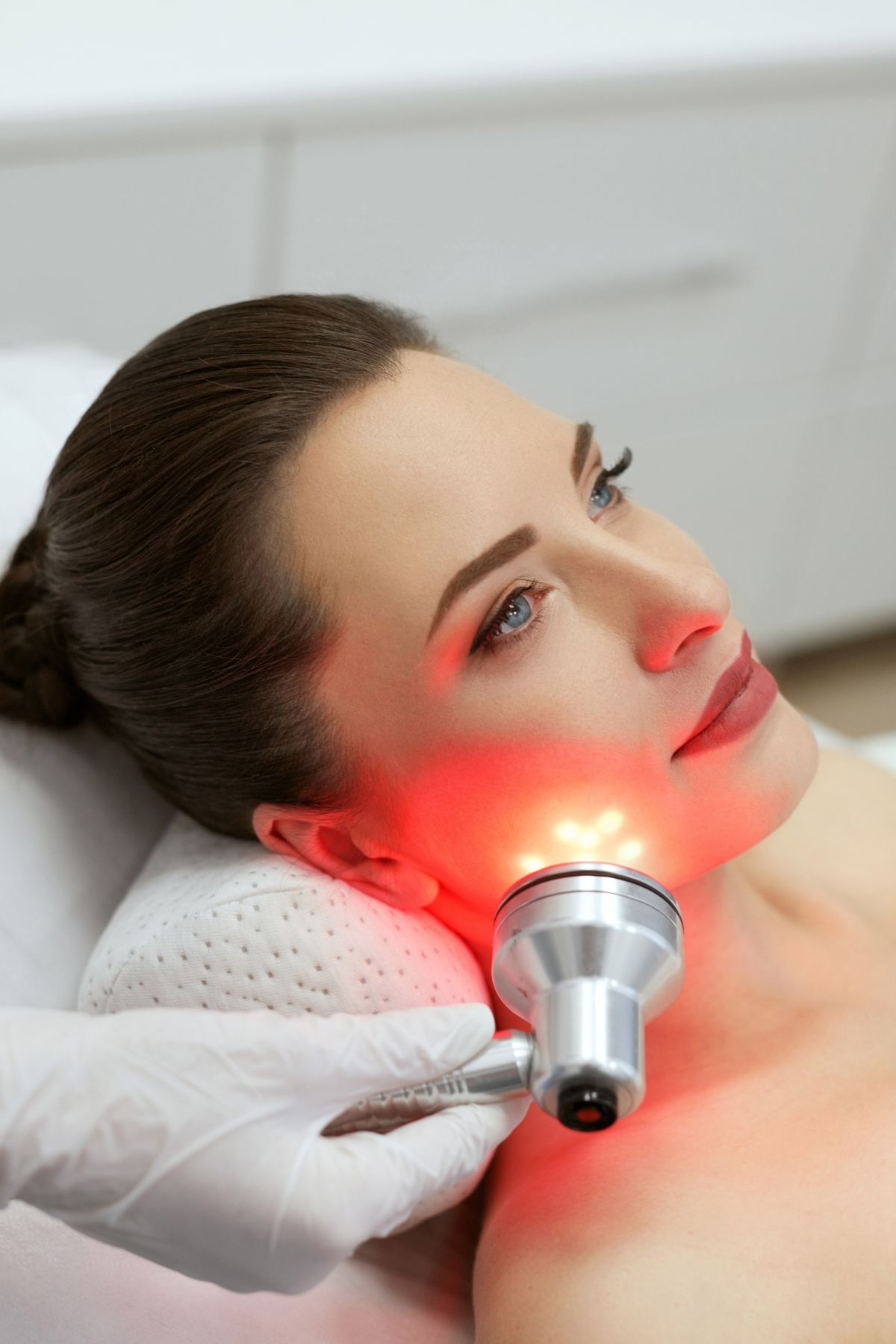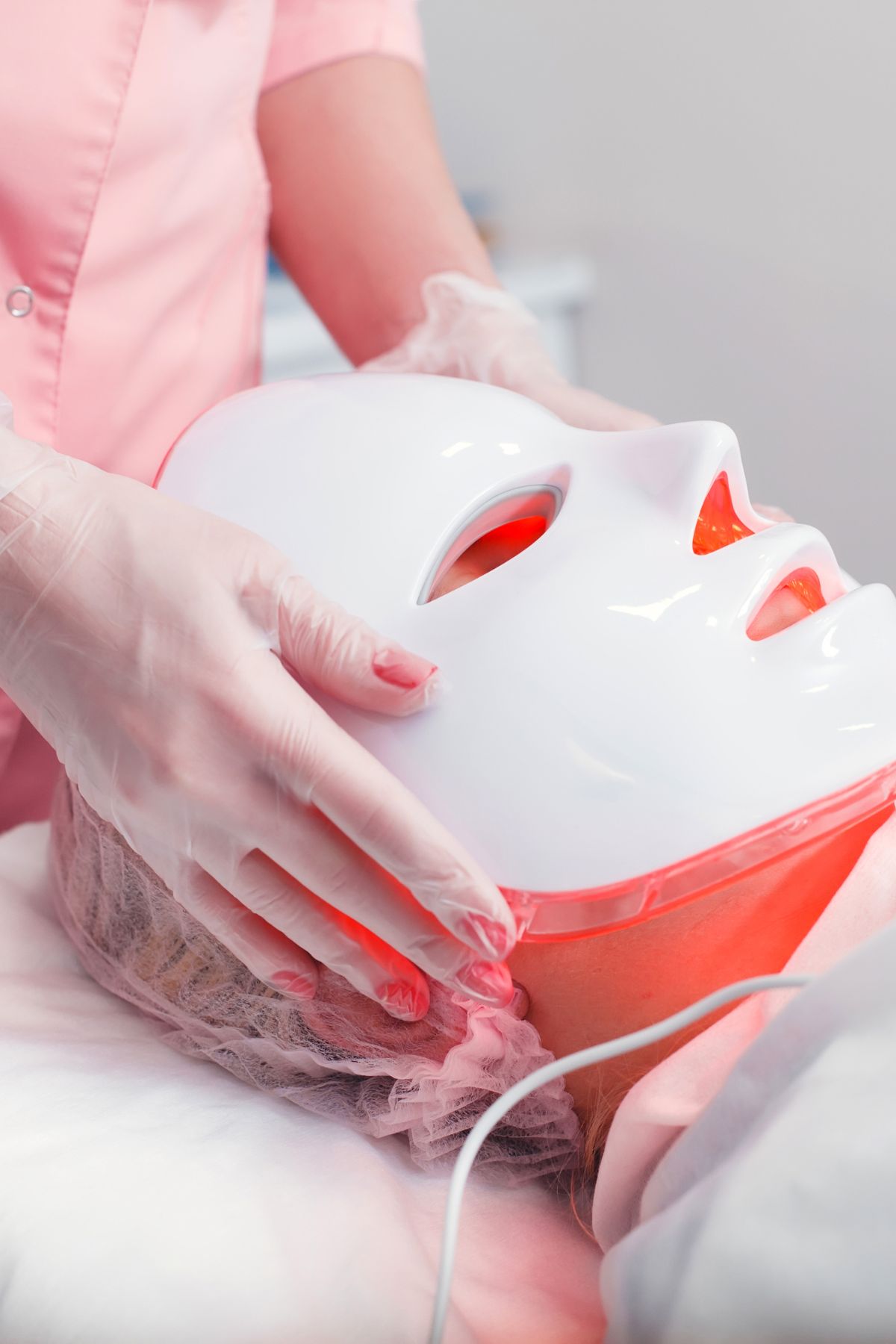A red light therapy dosage calculator helps you determine exactly how long to use a red or near-infrared (NIR) device for safe, effective results.
Red Light Therapy Dosage Calculator
While red light therapy is growing in popularity for skin health, inflammation, muscle recovery, and joint pain, the biggest confusion users face is how much light they actually need. Too little produces no measurable benefit. Too much can stall progress. That’s why having a reliable, science-based tool for determining dosage is essential.
This comprehensive guide explains how red light therapy dosing works, what inputs matter most, how to interpret irradiance numbers, how distance affects power, and why an accurate red light therapy dosage calculator should be your go-to tool before every session. Whether you use a handheld wand, a panel device, a wrap, or a full-body bed, you’ll learn how to personalize dosing for every treatment goal.

Why Dosage Matters in Red Light Therapy
Red light therapy (also called photobiomodulation or PBM) works by delivering precise wavelengths of light—most commonly 630–660nm for red light and 810–850nm for near-infrared (NIR). These wavelengths stimulate cellular energy (ATP), reduce inflammation, support collagen production, and assist tissue repair. But these biological reactions only occur within optimal dose ranges.
If the dose is too low, the cells don’t receive enough photons to trigger significant change.
If the dose is too high, the treatment becomes ineffective or can even produce a temporary inhibitory effect.
This is why tools such as a red light therapy dosage calculator are invaluable. They prevent guesswork and help achieve consistent, repeatable, therapeutic results.
Understanding the Core Concept: Energy Dose (J/cm²)
The most critical measurement in red light therapy is energy density, expressed in Joules per square centimeter (J/cm²).
The formula is:
Dose (J/cm²) = Irradiance (mW/cm²) × Time (seconds) ÷ 1000
Let’s break down the components:
Irradiance (mW/cm²)
This tells you how powerful the light is at the point where your skin is positioned. It varies depending on:
- Device model
- Distance from the panel
- Beam angle
- Pulsing mode
- Skin pigmentation
- Whether clothing obstructs the light
Accurate irradiance is impossible to guess. This is where a red light therapy dosage calculator becomes essential, as it adjusts the effective irradiance based on real-world use patterns such as distance, wavelength, pulsing, and skin type.
Common Recommended Dose Ranges
Different goals require different doses. Here are typical clinically supported ranges:
| Treatment Goal | Suggested Dose |
|---|---|
| Acne / Skin clarity | 8–12 J/cm² |
| Anti-aging, fine lines & wrinkles | 20–35 J/cm² |
| Scar healing | 25–50 J/cm² |
| Muscle recovery | 30–60 J/cm² |
| Joint pain & inflammation | 40–80+ J/cm² |
| General skin wellness | 10–20 J/cm² |
These values help you choose a dose inside a red light therapy dosage calculator, which then translates the dose into treatment time.
Why Using Time Alone Is Misleading
Many users simply set a timer for 10 minutes because device manuals suggest it. Unfortunately, this approach fails because irradiance varies dramatically between devices:
- Some panels deliver 20–30 mW/cm² at 12 inches
- Others deliver 100–150 mW/cm² at 6 inches
- Some handheld wands deliver only 5–15 mW/cm²
That means a 10-minute session on one device could equal a 1-minute session on another. A proper red light therapy dosage calculator eliminates this inconsistency by factoring irradiance directly into the calculation.
Distance Has a Huge Impact on Dose
Most people underestimate how much irradiance drops as they move away from the device. Red light therapy panels are not point sources; they are extended light sources. This means that distance reduces power, but not as dramatically as physics textbooks predict. Real-world attenuation typically looks like this:
- At 6 inches → near full strength
- At 9 inches → ~75% of strength
- At 12 inches → ~50–60%
- At 18 inches → ~35–40%
A good red light therapy dosage calculator uses a softened inverse-square model to mimic this behavior so your dose is realistic and science-aligned.
How Skin Type Influences Dosage
The Fitzpatrick Skin Type scale matters because melanin absorbs light differently:
- Types I–II (light skin): baseline doses
- Type III: +10% dose
- Type IV: +20%
- Type V: +30%
- Type VI: +35%
A sophisticated red light therapy dosage calculator adjusts exposure duration accordingly, ensuring deeper-skinned individuals receive the same effective energy delivery.

Red vs. NIR: The Wavelength Difference
Not all wavelengths behave the same:
Red Light (630–660 nm)
- Best for surface-level skin concerns
- Collagen stimulation
- Wrinkle reduction
- Acne reduction
Near-Infrared (810–850 nm)
- Deeper penetration (muscles, joints, nerves)
- Pain relief
- Blood flow improvements
- Athletic recovery
Because NIR penetrates deeper and is absorbed differently, a red light therapy dosage calculator can apply a multiplier that tailors dose length based on wavelength selection.
The Role of Pulsing (Duty Cycle)
Modern premium devices increasingly offer pulsed light modes like:
- 10 Hz
- 40 Hz
- 100 Hz
- 50% duty cycle modes
When using pulsed mode, the average irradiance decreases. This means you must increase exposure time to maintain correct dosing. A high-quality red light therapy dosage calculator automatically adjusts the effective irradiance using:
Effective Irradiance = Irradiance × (Duty Cycle ÷ 100)
Why Multi-Zone Planning Matters
Many users treat multiple areas in a single session:
- Face
- Neck
- Chest
- Shoulders
- Knees
- Lower back
Each zone may require a different:
- Distance
- Wavelength
- Dose
- Time
A true professional red light therapy dosage calculator supports multi-zone planning so users receive a tailored protocol instead of a one-size-fits-all approach.
Deep Tissue Treatments Require Higher Surface Doses
Skin-level treatments require modest doses, but deep joint therapy works differently. Only a small percentage of NIR reaches the interior of the joint. Clinical protocols sometimes apply 100–200+ J/cm² on the skin to achieve meaningful penetration. A feature-rich red light therapy dosage calculator surfaces this information so users are aware that some goals require stronger or longer sessions.
Inputs For a Red Light Therapy Dosage Calculator
A truly effective calculator should include the following inputs:
1. Treatment Goal
Sets the recommended dose range.
2. Device Irradiance (mW/cm²)
The single most important parameter.
3. Distance From Device
Automatically adjusts irradiance.
4. Skin Type
Ensures accurate energy absorption.
5. Wavelength (Red/NIR/Dual)
Optimizes dosing for skin vs. deep tissue.
6. Pulsing Mode (Duty Cycle)
Adjusts irradiance dynamically.
7. Custom Dose (Optional)
For advanced users following therapeutic protocols.
8. Session Time (Optional)
Allows reverse-calculation of delivered energy.
When these eight elements work together, a red light therapy dosage calculator becomes far more accurate than any generic advice found online.
How a Red Light Therapy Dosage Calculator Works Step by Step
A well-designed calculator performs the following steps:
Step 1: Select Goal
The calculator loads the ideal J/cm² range for that condition.
Step 2: Determine Effective Irradiance
It adjusts for distance, wavelength, and pulsing.
Step 3: Apply Skin Type Multiplier
This ensures dose accuracy for differently pigmented skin.
Step 4: Compute Time Required
It uses the core formula to convert energy density into minutes.
Step 5: Provide a Time Range
Minimum, target, and maximum recommended times.
Step 6: Multi-Zone Summary
Each zone receives its own time estimate and irradiance value.
Users experience greater clarity and confidence when using a red light therapy dosage calculator, knowing exactly how long to treat each area with precision.
Common Errors Users Make Without a Dosage Calculator
Here are the top mistakes people make when they don’t use a calculator:
1. Sitting Too Far From the Device
Distance drastically reduces irradiance, often by half or more.
2. Guessing Time Instead of Dose
Time is meaningless without knowing irradiance.
3. Layering Sessions Incorrectly
Some users over-dose while others under-dose.
4. Ignoring Multi-Zone Differences
The face and knees may require dramatically different exposure times.
5. Overlooking Pulsing Effects
Duty cycle reduces irradiance and requires more time.
By eliminating these mistakes, a red light therapy dosage calculator improves safety, consistency, and results.
Who Benefits Most from a Dosage Calculator?
Anyone using red light therapy regularly will benefit, but especially:
- People treating chronic pain
- Athletes using NIR for recovery
- Users with high-power devices
- People with darker skin types
- Those treating multiple zones
- Individuals experimenting with pulsed modes
In other words, nearly every user can gain something from a well-designed red light therapy dosage calculator.
Why Calculators Outperform Manufacturer Guidelines
Manufacturers often provide generic instructions such as:
- “Use for 10 minutes per area”
- “Keep device 6–18 inches away”
These vague guidelines assume:
- The goal is always the same
- User skin type is identical
- Distance is consistent
- Irradiance is uniform
- Output does not vary with pulsing
A scientific red light therapy dosage calculator removes this guesswork and applies precise, individualized adjustments.

How Accurate Calculators Support Long-Term Progress
Over weeks or months, using consistent doses:
- Enhances collagen remodeling
- Reduces wrinkle depth
- Improves skin tone and tightness
- Supports muscle repair
- Reduces inflammation
- Improves joint comfort
Without accurate dosing, results may be inconsistent or plateau. A red light therapy dosage calculator ensures that users apply the same therapeutic energy every time, reinforcing predictable outcomes.
Conclusion
Red light therapy is an incredibly powerful tool when used correctly, but the key to achieving optimal results is accurate dosing. A high-quality red light therapy dosage calculator transforms the entire experience by removing uncertainty, personalizing treatment times, and adjusting for variables like irradiance, distance, wavelength, skin type, pulsing mode, and multi-zone routines. Instead of guessing how long a session should last, users receive clear, data-driven guidance that reflects genuine photobiomodulation science.
Whether your goals are anti-aging, acne reduction, muscle recovery, or deeper joint therapy, a red light therapy dosage calculator ensures every session delivers the right amount of energy safely and consistently. It’s an essential tool for anyone serious about maximizing the benefits of red and near-infrared light therapy.
